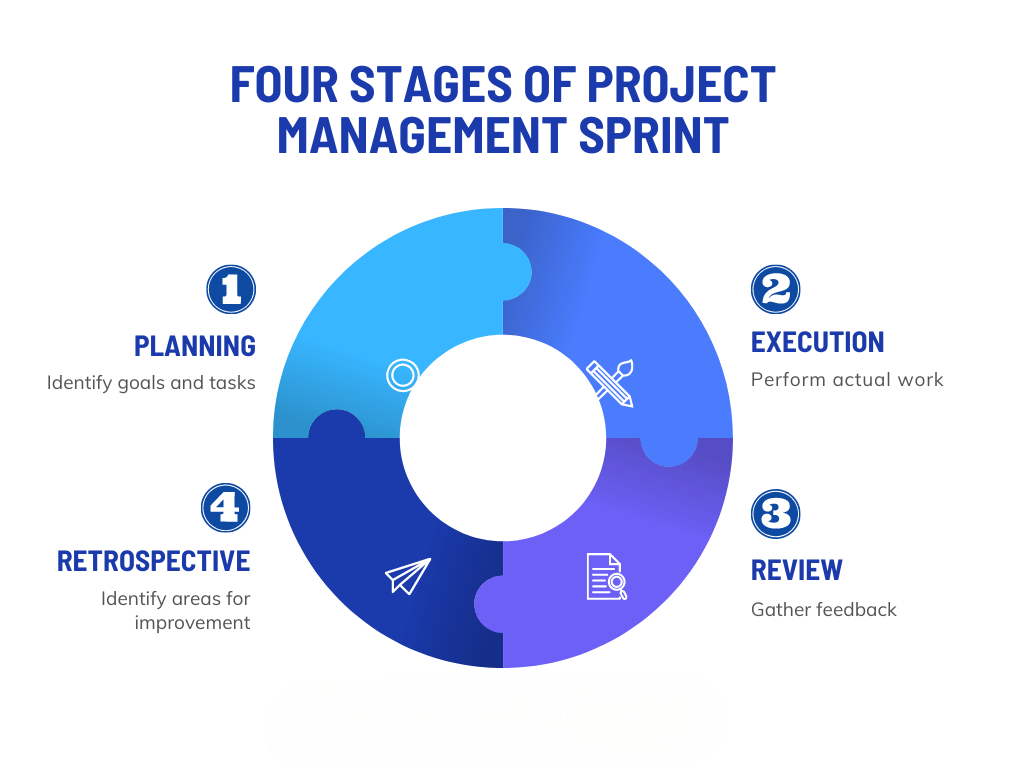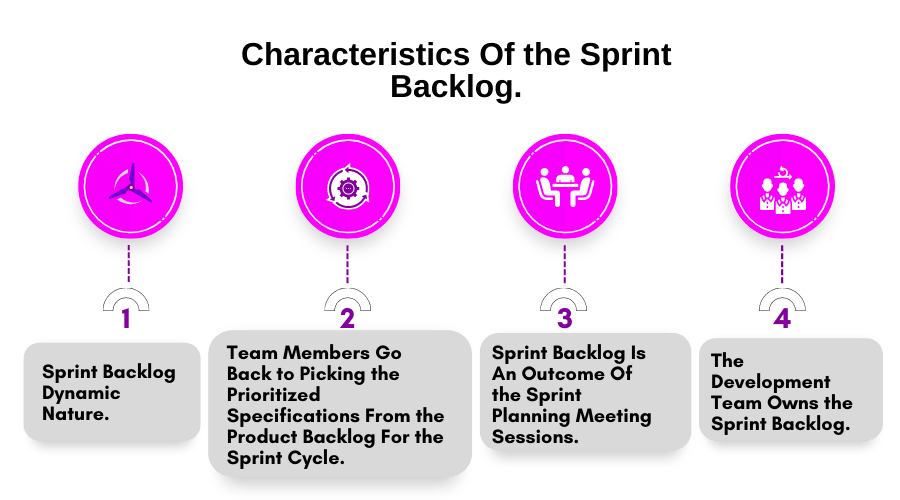
- Introduction to Agile Methodology
- What is a Sprint Backlog?
- The Role of the Sprint Backlog in Scrum Framework
- Key Components of a Sprint Backlog
- How to Create a Sprint Backlog
- Sprint Backlog vs Product Backlog: What’s the Difference?
- Benefits of Using a Sprint Backlog in Agile Projects
- Sprint Backlog and Its Impact on Team Collaboration
- Common Challenges in Managing a Sprint Backlog
- Best Practices for Effective Sprint Backlog Management
- Conclusion
Introduction to Agile Methodology
Agile methodology is a project management and software development approach that focuses on flexibility, collaboration, customer feedback, and incrementally delivering functional products. Agile values working software, individuals, interactions, customer collaboration, and responding to change over rigidly following processes or plans. In Agile, work is broken into smaller tasks, delivered in iterative cycles known as Sprints. The Sprint Backlog is one of the core elements of this iterative process, providing a list of tasks the team commits to completing during the Sprint. For more insights on project management, consider exploring PMP Training.
What is a Sprint Backlog?
The Sprint Backlog is a key artifact in Scrum, a widely used Agile framework. It is a list of tasks, requirements, or user stories that the development team commits to delivering during a Sprint. The Sprint Backlog provides transparency, clarity, and a shared understanding of the team’s priorities and goals for the current Sprint. It evolves daily based on the progress made and any necessary adjustments.
The Sprint Backlog contains two primary components:
- Product Backlog Items (PBIs) or User Stories that the team will work on during the Sprint.
- A Sprint Goal articulates the team’s objective by the end of the Sprint.
Become a Project Management expert by enrolling in this PMP Training Online Course today.
The Role of the Sprint Backlog in Scrum Framework
In the Scrum framework, the Sprint Backlog ensures the team remains focused on delivering value throughout the Sprint. It allows for:
- Transparency: Team members can easily see what work is planned and the progress made.
- Flexibility: The Sprint Backlog can be adapted as the team uncovers new information or learns about unexpected challenges.
- Accountability: The team commits to delivering specific tasks within the Sprint, holding them accountable.
The Sprint Backlog is created during the Sprint Planning meeting, where the Product Owner and Development Team collaborate to select items from the Product Backlog that are feasible for the Sprint duration. To enhance your understanding of project management, consider exploring PMP & Tutorial resources.
Advance your Project Management career by joining this PMP Training Online Course now.
Key Components of a Sprint Backlog
The Sprint Backlog consists of several key components:
- Sprint Goal: A concise, clear objective that outlines what the team aims to achieve during the Sprint.
- Selected Product Backlog Items (PBIs): These are the user stories or requirements chosen for the Sprint. The Product Owner ensures that these align with the highest priorities.
- Task Breakdown: Each PBI is divided into smaller tasks, typically assigned to team members.
- Burndown Chart: A visual tool that tracks the team’s progress by showing how much work remains in the Sprint. This can be updated daily.

How to Create a Sprint Backlog
Creating a Sprint Backlog involves several steps:
- Sprint Planning Meeting: The first step in creating a Sprint Backlog is the Sprint Planning meeting. Here, the team discusses the Product Backlog items that should be worked on in the upcoming Sprint. The Product Owner helps the team prioritize these items.For those looking to deepen their project management skills, PMP Training can provide valuable insights.
- Define the Sprint Goal: The team agrees on a Sprint Goal that describes the outcome they want to achieve by the end of the Sprint. This goal focuses the team’s efforts.
- Break down PBIs into Tasks: The next step is to break down the chosen PBIs into smaller tasks. Each task should be manageable and well-defined. Tasks may vary in complexity and effort, but they should be clear enough to enable the team to track progress.
- Assign Tasks: The team members take ownership of the tasks based on their expertise and workload capacity.
- Daily Standups: During the Sprint, the team will hold daily standup meetings to discuss progress, update the Sprint Backlog, and re-assign or add new tasks as necessary.
Sprint Backlog vs Product Backlog: What’s the Difference?
While both the Sprint Backlog and Product Backlog are essential in the Scrum framework, they serve different purposes:
- Product Backlog: The Product Backlog is a prioritized list of all the features, user stories, enhancements, and fixes that could be implemented in the product. It’s a living document continuously updated and refined throughout the project.For a comprehensive overview of project deliverables, you can refer to the Statement of Work.
- Sprint Backlog: In contrast, the Sprint Backlog consists only of the items selected for the current Sprint. It is a subset of the Product Backlog, filtered to reflect what the team can complete within the Sprint duration.
The Product Owner owns the Product Backlog, while the Scrum Team manages the Sprint Backlog.

Benefits of Using a Sprint Backlog in Agile Projects
The Sprint Backlog offers a range of benefits that contribute to the overall success of Agile projects:
- Increased Focus: The Sprint Backlog provides a clear set of tasks to be completed during the Sprint. This ensures that the team stays focused and avoids scope creep.
- Improved Transparency: All team members can see what tasks are planned for the Sprint and track progress, ensuring alignment.
- Efficient Planning: By breaking down the work into manageable tasks, the team can better estimate how much work can be completed during a Sprint.
- Better Collaboration: The Sprint Backlog fosters communication among team members, as they can easily discuss tasks, dependencies, and blockers during daily standups.
Are you getting ready for your PMP interview? Check out our blog on PMP Interview Questions and Answers!
Sprint Backlog and Its Impact on Team Collaboration
A well-maintained Sprint Backlog fosters a collaborative work environment where all team members know their responsibilities and progress. Regular updates to the Sprint Backlog allow the team to
- Share information freely: Daily standups allow the team to share progress, challenges, and blockers. The Sprint Backlog serves as a visual representation of this.
- Coordinate efforts: With a transparent backlog, team members can coordinate their work, ensuring dependencies are handled and no one is working on duplicate tasks. To help clarify roles and responsibilities, teams can use a RACI Chart, ensuring everyone knows their specific tasks.
- Adapt quickly to change: The Sprint Backlog is a living artifact that can be adjusted for unexpected developments or new insights.
Common Challenges in Managing a Sprint Backlog
Managing a Sprint Backlog comes with its own set of challenges:
- Scope Creep: The temptation to add new tasks or features outside the original Sprint goal can lead to scope creep, which may cause the team to become overwhelmed and lose focus.
- Unclear Tasks: Sometimes, tasks in the backlog are not well-defined, which can create confusion and result in work being delayed or misaligned.
- Overloaded Backlog: Teams may try to load too many tasks into the Sprint Backlog, leading to burnout and an inability to complete everything within the Sprint.
- Lack of Collaboration: Without active participation from the entire Scrum team, including the Product Owner and Scrum Master, the Sprint Backlog may fail to reflect accurate priorities or capacity.
Best Practices for Effective Sprint Backlog Management
To avoid the challenges and maximize the benefits of using a Sprint Backlog, teams can adopt several best practices:
- Keep it Clear and Concise: Break down tasks to a manageable level and ensure each item is clear in scope.
- Limit the Number of Items: Prioritize items to ensure that only the most essential tasks are included in the Sprint Backlog.
- Collaborate Regularly: Ensure the team actively participates in daily standups and backlog refinement sessions.
- Update Frequently: Review and update the Sprint Backlog daily to reflect the current progress and adjust as needed.
- Maintain a Focused Sprint Goal: Ensure the Sprint Goal is always top-of-mind to prevent scope creep and ensure the team stays on course.
Conclusion
The Sprint Backlog is a crucial tool in Agile development, providing a clear overview of the work to be completed during a sprint. It comprises a prioritized list of tasks, features, and user stories selected from the Product Backlog, ensuring that the team focuses on high-priority items that deliver the most value. The Sprint Backlog is dynamic, with daily updates to reflect the progress and any changes to the scope of work. It promotes transparency, allowing the team to track progress and identify potential roadblocks early. To manage the Sprint Backlog effectively, best practices include maintaining a well-defined scope, breaking tasks into manageable units, and ensuring continuous communication within the team. By following these practices, teams can improve collaboration, increase productivity, and achieve better sprint outcomes. In the evolving landscape of Agile, mastering the Sprint Backlog is vital for successful project execution and team alignment.For further development in project management, you can explore PMP Training.





